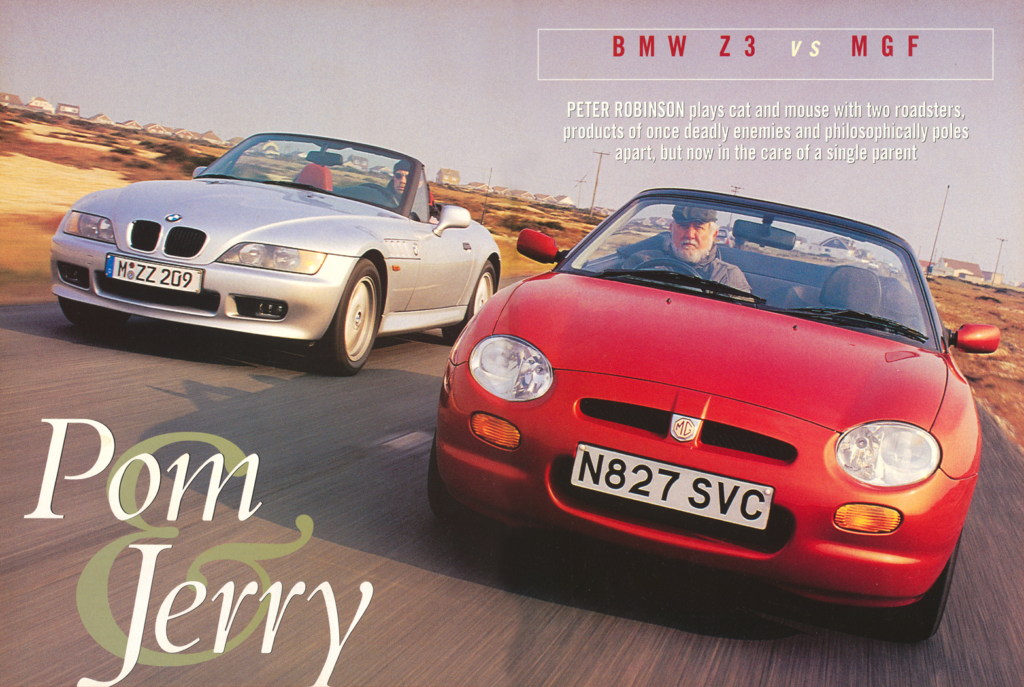WRIT LARGE on any list of motoring mightabeens is the name of the Bantam BRC 40, a 1940 product of American Bantam (previously American Austin). Roughed out by the small Pennsylvania car maker’s plant manager Harold Crist in consultation with the client, and properly penned by Detroit freelance designer Karl Probst, the BRC 40 was done in a hurry: the client’s commission had allowed just 49 days from concept to prototype delivery.
The client was the US Army and the urgent market force was World War 2. In mid-1940, the US War Department issued a requirement for a quarter-ton, 4WD reconnaissance vehicle and invited 135 US industrial manufacturers to submit working prototypes by late-September.

Of just three that responded – Bantam, Willys-Overland and Ford – only Bantam delivered on deadline. Concerned by the small size of the company, the US government encouraged Willys and Ford to press on with their prototypes; the Quad and the Pygmy, respectively, were delivered in November. All were similar in layout and appearance, prompting many to believe that Bantam’s design was leaked to the rivals.
Each was invited to submit 1500 examples for field-testing.

Much was admired about the Bantam, but aspects of the others could not be overlooked, notably Willys’ more powerful four-cylinder engine (the 45kW ‘Go Devil’), and Ford’s easier-to-produce, practical flat bonnet and mudguards and stamped steel grille.
In July 1941, the War Department melded them into a standardised design. Further evolution focused on removing weight (the Army’s initial requirement had been an unrealistic 590kg, later raised to 980kg). Willys’ engine designer and former Studebaker engineer, Barney Roos, specified shorter bolts, lighter steels and even a single coat of paint.

Hurtfully, in October 1941 the production contract was awarded to Willys-Overland, largely on the basis of its superior engine. In January 1942, a second contract was awarded to Ford, whose Willys-licensed vehicle was known as the Ford GPW. Ford stamped its flying F into various bolts and small parts, but everything was interchangeable.
Between 1941 and the end of production on September 21, 1945, Willys produced 362,841 of its ‘MB’ and Ford around 281,448 of its GPW. And Bantam? Furious, and having produced only 2643 cars, its consolation was a contract to produce quarter-ton, amphibious trailers to be towed behind the ‘Jeep’.

Just the shot
The Willys L134 ‘Go Devil’ in-line four wasn’t hi-tech, but it was (perhaps literally) bulletproof. Displacing 2199cc, the ‘flathead’ (side-valve) design had a cast- iron block and head, with a single carburettor and cast-iron manifolds. It made 45kW at 4000rpm and 142Nm at 2000rpm. A Borg-Warner T84 three-speed manual drove via a Dana 18 two-speed transfer case. Top speed on-road was 100km/h.

Platform ladder
The chassis was as simple as a steel ladder gets, with only a different-shaped radiator crossmember distinguishing Willys and Ford builds. Overall length was 3353mm, on a 2032mm wheelbase. Suspension was by semi-elliptic leaf springs front and rear, with telescopic dampers. Wheels were 16-inch with drum brakes. Kerb weight was 1100kg, for payloads of 365kg off-road or 545kg on-road.
Departure lounge
There wasn’t much to see around a Jeep, but it was capability that counted – like the 45-degree approach and 35-degree departure angle – not comfort. The windscreen folded flat for transport; early wipers were manually operated. Ford contributed swivelling headlamps, to illuminate the engine bay. Seats were simple canvas cushions on steel tube frames, with a similar rear bench. Folded roof bows framed the rear cockpit. Exterior brackets held shovel, axe and fuel can; an optional rifle rack straddled the dash.






